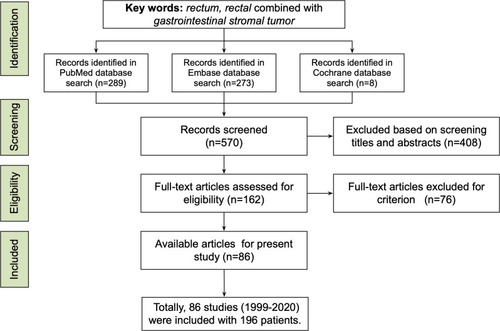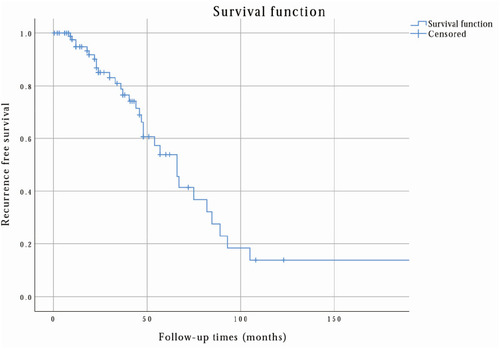Figures & data
Figure 1 The study used key words such as rectum, rectal, and gastrointestinal stromal tumor to conduct a literature search in PubMed, Embase, and Cochrane Library, and screened 570 records. According to the inclusion and exclusion criteria, 86 studies including 196 patients were available from 1999 to 2020.

Table 1 Clinical and Oncological Features of Patients with RGIST
Figure 2 The recurrence-free survival rate of L-RGIST was calculated by the researchers via SPSS. From this analysis, the 3-year, 5-year, and 10-year recurrence-free survival rates were 78.7%, 53.9%, and 13.8%, respectively.

Figure 3 The overall survival rate of L-RGIST was calculated by the researchers via SPSS. From this analysis, the 3-year, 5-year, and 10-year overall survival rates were 90.1%, 87.3%, and 40.9%, respectively.

Figure 4 The researchers reached a conclusion on the choice of surgical procedures depending on different tumor sites. In conclusion, transanal resection based upon TaTME and non-transanal resection based upon TME or TSME were the most common and recommended choices based upon Chinese consensus and the clinical practice of three centers.

